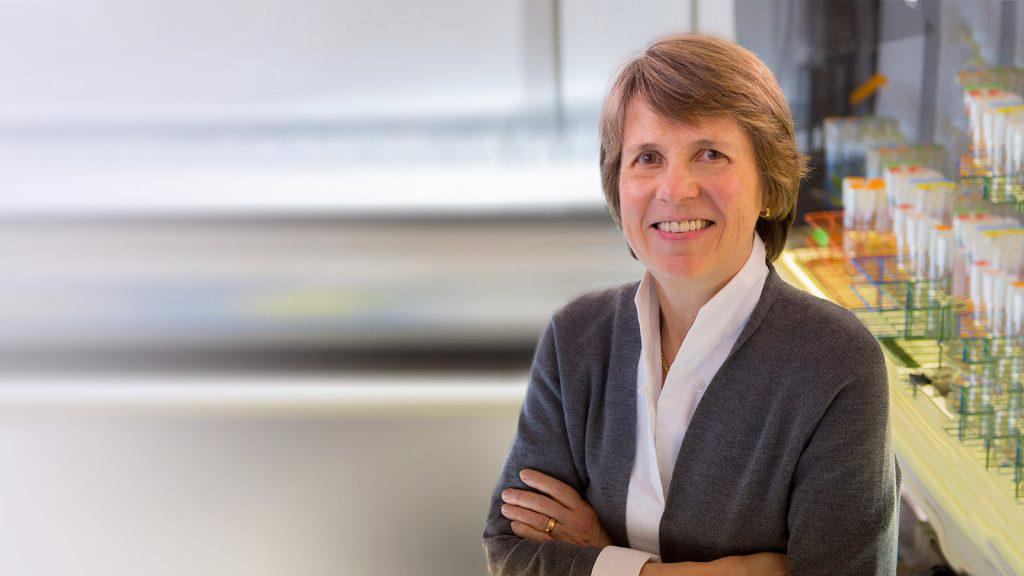
Institute Professor Sallie “Penny” Chisholm is best known for her role in discovering the tiny bacteria called Prochlorococcus — the world’s most abundant photosynthetic organism. But she has also played a pivotal role in pioneering and advocating for women’s rights at MIT and beyond.
Celina Zhao
March 31, 2022
Without the ancestors of the ocean microbe that Sallie “Penny” Watson Chisholm discovered in 1986, humans may not have ever evolved on Earth. The tiny microbe is called Prochlorococcus, and it’s full of superlatives. One hundred of them can fit on the width of a single strand of human hair, making them the smallest photosynthetic organisms on the planet. At the same time, they’re also the most abundant, comprising an integral piece of the oceans’ “invisible forest.” In fact, you can thank them for the oxygen you breathe in every twentieth breath you take.
With their population, which numbers in the billion billion billions and weighs a collective 220 million Volkswagen Beetles, you might expect Prochlorococcus to be easy to find. But they were not uncovered until the 1980s — and by accident, at that. Since that fateful discovery, Chisholm has dedicated her life and career to studying these intriguing little cells. They have earned her a National Medal of Science from former President Barack Obama, led her to a debate with the Dalai Lama, and even sparked a meeting with the Wu-Tang Clan’s GZA, a rapper interested in featuring the bacterium in his album.
This extraordinary journey, however, was not a straight path — in part because being a pioneering female researcher was no easy feat.
Early life and education
Chisholm was born on November 5, 1947 in Marquette, Michigan, a small town located on the shores of Lake Superior. While growing up, her passion was not science, but skiing, and when it came time to apply for college, she had little ambition and few dreams in higher education.
Her parents, however, intervened. Chisholm’s mother, a traditional 1950s housewife, hated not having her own job or income. In particular, she stressed to her daughter the importance of being able to get an education and career. So, Chisholm traveled east to Saratoga Springs, New York, enrolling at Skidmore College — then a private liberal arts women’s college.
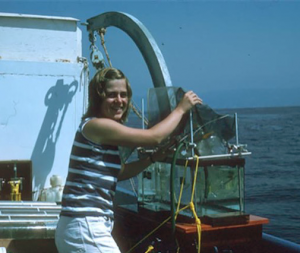
Living at Skidmore, where she studied biology and chemistry, was a formative experience. “It unconsciously builds a confidence,” Chisholm says of the absence of men competing for attention and resources. In her senior year, she participated in her first fieldwork expedition, studying the prevalence of the mineral manganese in a local lake. Noticing her interest and potential in research, her advisor suggested she attend graduate school. Though the idea had never occurred to her before, it sounded much more interesting than entering the workforce, and so she agreed.
After a year as a graduate student at Cornell University, Chisholm transferred to the State University of New York (SUNY) to study freshwater plankton. With her PhD in hand — the first PhD in her entire extended family — she moved to the sunny beaches of La Jolla, California for her postdoctoral studies. At the University of California San Diego’s Scripps Institute of Oceanography, she began studying the massive system to which she’d dedicate the rest of her career: the ocean.
Just a few months after arriving at Scripps, Chisholm sailed around the Gulf of California on her first research cruise, the R/V Alpha Helix. She stood out from most of the members of the ship in a prominent way — she was one of only a few women aboard. Women were only just starting to be allowed on research vessels in the 1970s, an imbalance that would persist on Chisholm’s other cruises at Scripps.
And, though she loved her time at Scripps, by 1976 it was time to move on. She had three options: a small marine lab in Maine, an oceanography department in Canada, or the Civil and Environmental Engineering Department at MIT. In the case of the latter, she would not simply be the only biologist; she would be the only woman. Should she choose a comfortable route, or should she choose the challenge? Then, one of her mentors at Scripps told her, “Penny, you don’t turn down MIT.” It was a once-in-a-lifetime opportunity, so she decided to give it a shot.
Settling into MIT
In 1976, Chisholm arrived at MIT to continue studying the physiology of various phytoplankton species. One of the instruments she used was a flow cytometer. Though traditionally only used in medical settings, she’d discovered that flow cytometers — with their ability to move individual cells in single file past a laser for a convenient close-up view — were also excellent for her research. In addition, she’d noticed that the unique pigments of phytoplankton fluoresced distinctive colors in the laser’s presence. For example, the green chlorophyll found in phytoplankton would emit red light when struck by a blue laser. Accessory pigments in some would emit orange light.
One day, she and her team came to a game-changing idea: “Wouldn’t it be cool if we could take an instrument like this out on a ship and just squirt sea water through it to see what the diversity of phytoplankton look like?” she mused. This idea immediately opened a whole new set of doors for possible research.
At the start of Chisholm’s career, scientists had a highly restricted picture of microbes in the ocean. This was largely due to limitations in microscope technology: phytoplankton smaller than 5 microns were extremely difficult to see using standard microscopy of the day. In 1979, however, John Waterbury of the Woods Hole Oceanographic Institution, using a technique known as epifluorescence microscopy, discovered tiny photosynthetic cyanobacteria only about 2 microns in diameter, which glowed orange. He named the bacterium Synechococcus. Chisholm was intrigued, and her team set off to the Caribbean in 1985 with their flow cytometer to study them.
While studying images of Synechococcus, they started seeing extremely tiny red signals on their instrument. They didn’t think much of it at first — assuming it was probably just electronic noise. But, as these signals kept showing up, they began to wonder: Could these signals be coming from something that was alive?
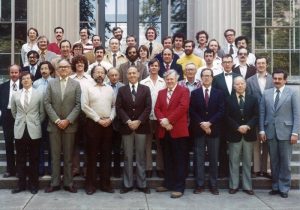
It was an intriguing possibility, with evidence in its favor. She and her team noticed that the signals varied depending on the depth and temperature of the water sample being analyzed. There was no reason for electronic noise to increase with depth. But there was good reason for cells to have more chlorophyll (hence the red color under the blue laser of the flow cytometer) the deeper they were under the surface of the water, in order to help with photosynthesis.
Over the next few years, collaborators discovered the same little cells in other seas across the globe. In 1988, Chisholm and her team published their findings in the journal Nature. In the paper, the researchers referred to them as a “new group of pico-plankters,” but members of the lab affectionally called them “little greens” because they contained chlorophyll b, which is a characteristic of green plant chloroplasts. For its formal name, they eventually chose “Prochlorococcus,” meaning “little round progenitors of chloroplasts,” or more colloquially “primitive green berries.”
Chisholm ultimately refocused her entire lab on Prochlorococcus, which revealed itself to be a fascinating subject. She had been looking for a phytoplankton species that could be both easily studied in the lab and easily found in the oceans. Prochlorococcus seemed like a promising model system through which she and her lab could begin understanding how the ocean works.
It turns out that Prochlorococcus wasn’t just one uniform organism, but a collective, composed of more than 30 clusters of strains called “ecotypes” with their own unique survival tactics. This collective has adapted to various environments, dividing up vast swaths of the oceans with various light, temperature, and nutrient combinations. Each ecotype is the “most efficient photosynthetic machine” at its particular conditions — and added together produce 10% of the oxygen in the atmosphere.
To Chisholm, this was an unmistakable sign that there was something truly remarkable about Prochlorococcus. But it would take a few more years for technology to develop far enough to uncover more.
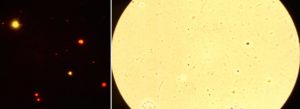
Taking a stance on women’s rights at MIT
Deep in the thralls of Procholorococcus research, Chisholm worked early mornings and stayed late into the night. She was in her late forties, and her life revolved around her job. In 1994, during one of those typical long days in her office, she received a phone call that dramatically changed the way she viewed her career.
It was from Nancy Hopkins, a fellow MIT professor whom she casually knew. Hopkins was rallying the support of the 17 other senior female faculty at MIT for a purpose: She believed MIT was discriminating against all of them in multiple areas, including lab space, pay, and support. Hopkins asked Chisholm if she would be willing to come to a meeting and discuss these issues.
Chisholm didn’t know what would come of the meeting, nor did she expect much change to happen. In fact, she had never really thought about what it meant for her to be among the few female faculty at MIT. “I was just doing my work,” she says, “and I liked being one of the guys. I wasn’t plugged into feminist issues or anything.”
But she agreed to attend, and in a few days, found herself in a discreet location on campus. The room was small. Some women sat on chairs, while others sprawled on the floor.
It was awkward at first. “We didn’t know each other that well, so nobody wanted to speak out. We didn’t want to be that one woman faculty member to complain because that meant you couldn’t cut it,” she recalls. But soon everyone started shedding their protective shells. Hours went by as they all found common ground.
Chisholm came to a realization, which she later articulated in her Killian Award acceptance speech: “There’s always a general sense of not being part of the club. It’s like there’s a playbook for this whole enterprise we’re involved in, and it was written by men. As a woman, you’re just constantly trying to figure out what the game is and what the playbook is.”
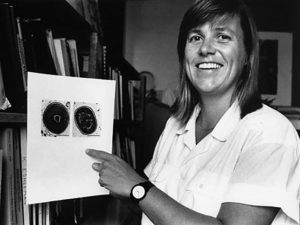
Armed with a letter calling for investigation, they marched into Dean Robert J. Birgeneau’s office. One of the women even put on a skirt for the first time. They had no idea how he’d react, but preliminary evidence seemed to be on their side. Not only were there 194 tenured male professors compared to only 15 tenured women faculty in the School of Science, the percentage of female faculty hadn’t budged from 8% in 20 years.
Seeing their determination and the evidence, Birgeneau agreed to help. Together with MIT President Charles Vest, he established the MIT Committee on Women Faculty in the MIT School of Science. Birgeneau and Vest charged the committee “to study the status of women in science at MIT and, among other things, to determine the reasons for [MIT’s] failure in the School of Science to hire and promote significant numbers of women faculty.”
The committee’s findings over a two year period were published in a report in 1999. The report made headlines in nearly every major newspaper when President Vest admitted to and apologized for the gender discrimination.
“It was a shot heard around the world,” Chisholm says. And it was true — the MIT administration acted quickly and decisively to right its wrongs. Salaries were adjusted, space and equipment allocation were corrected, retirement packages were increased, among many other changes. Importantly, several other higher education institutions followed MIT’s lead.
As a result of their shared experience, the group of women faculty grew close. Chisholm says, “In my mind, that was one of the best outcomes — on top of all the positive changes by the administration — in terms of my quality of life at MIT: having a community of women that I could talk to.”
Increasing recognition for Prochlorococcus and legacy at MIT
Parallel to the push for equity for women faculty at MIT was the development of one of the most ambitious science expeditions to date — sequencing the human genome. After the Human Genome Project released the sequence of all 20,000 human genes in 2003, there was an abundance of DNA sequencing machines available for other projects. Chisholm leapt at the chance to learn more about her “little greens.” A strain of Prochlorococcus called MED4 became the second microbial genome to be sequenced.
The sequencing “completely opened up the black box,” Chisholm says. With only 1,700 genes, that strain of cyanobacteria is one of the simplest self-sustaining organisms known. Chisholm wrote in a chapter of “Microbes and Evolution: The World that Darwin Never Saw”, “This cell is truly the ‘essence’ of life. As a photosynthesizer, it can do what humans cannot, even with all of our technology: It can split water using sunlight and make hydrogen and oxygen — all with only 1,700 genes.”
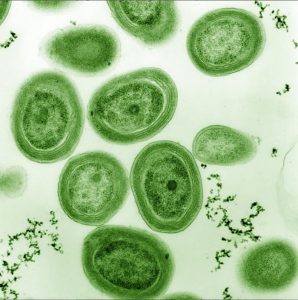
Together, Chisholm and her lab eventually learned that though each Prochlorococcus strain contains fewer than 2,000 genes, the collective as a whole contains more than 80,000 — four times the size of the human genome. There is a core set of genes (about 1,200) that all Prochlorococcus share, and a few hundred more that are shared only by a subset of strains. In addition, each individual strain has an additional 80-200 genes that are completely unique to it. That incredible diversity allows Prochlorococcus to thrive in all sorts of environmental conditions, from 40 degrees north to 40 degrees south latitudes to almost 200 meters under the ocean where there’s less than 1% light penetration. As the environment shifts, so does the ecotype composition, stabilizing the total population of the species.
Additionally, it turns out that Prochlorococcus is also integral to its local environment. The 5 billion tons of living biomass it produces though photosynthesis each year is eaten by small microorganisms, then zooplankton, then fish. Ultimately, Prochlorococcus feeds 10% of all the creatures in the sea.
Over the years, Chisholm has led the charge in uncovering more about these intriguing cyanobacteria, including how they interact with other things in their environment like viruses or different microorganisms, as well as the unusual molecules Prochlorococcus produce. This persistent dedication has earned her many awards and honors. In 2011, former President Barack Obama presented her with the National Medal of Science, the White House’s highest honor for American scientists. In 2014, she won the MIT James R. Killian Faculty Award, and in 2015 she was named an MIT Institute Professor — the highest title that MIT bestows, and one that only 13 faculty presently hold. In 2019, she was awarded the Crafoord Prize in Biological Sciences by the Swedish Academy of Sciences, the equivalent of a Nobel Prize for biosciences.
As she was gaining worldwide recognition for her research, Chisholm also served as teacher and mentor to many classes of students at MIT. In 1993, she joined the Department of Biology to teach 7.014 (Introductory Biology). Her class was the only introductory biology class to feature ecology. In her lab, she advises undergraduate and graduate students with varying backgrounds, from biology, to chemistry, to oceanography, to civil and environmental engineering.
Her advocacy for women faculty’s rights at MIT has also paid off over the years, with statistics slowly but surely improving to more equal footing. As of June 2019, 250 of the approximately 1,050 faculty members are women, and within the Schools of Science and Engineering, women comprise 22% of the faculty.
And, nearly four decades later, Prochlorococcus still remains an irresistible siren to her. “I should probably be thinking about retiring, but I’m not because Prochlorococcus is too darn interesting,” Chisholm says. “I’m really very grateful to have this organism in my life.”
